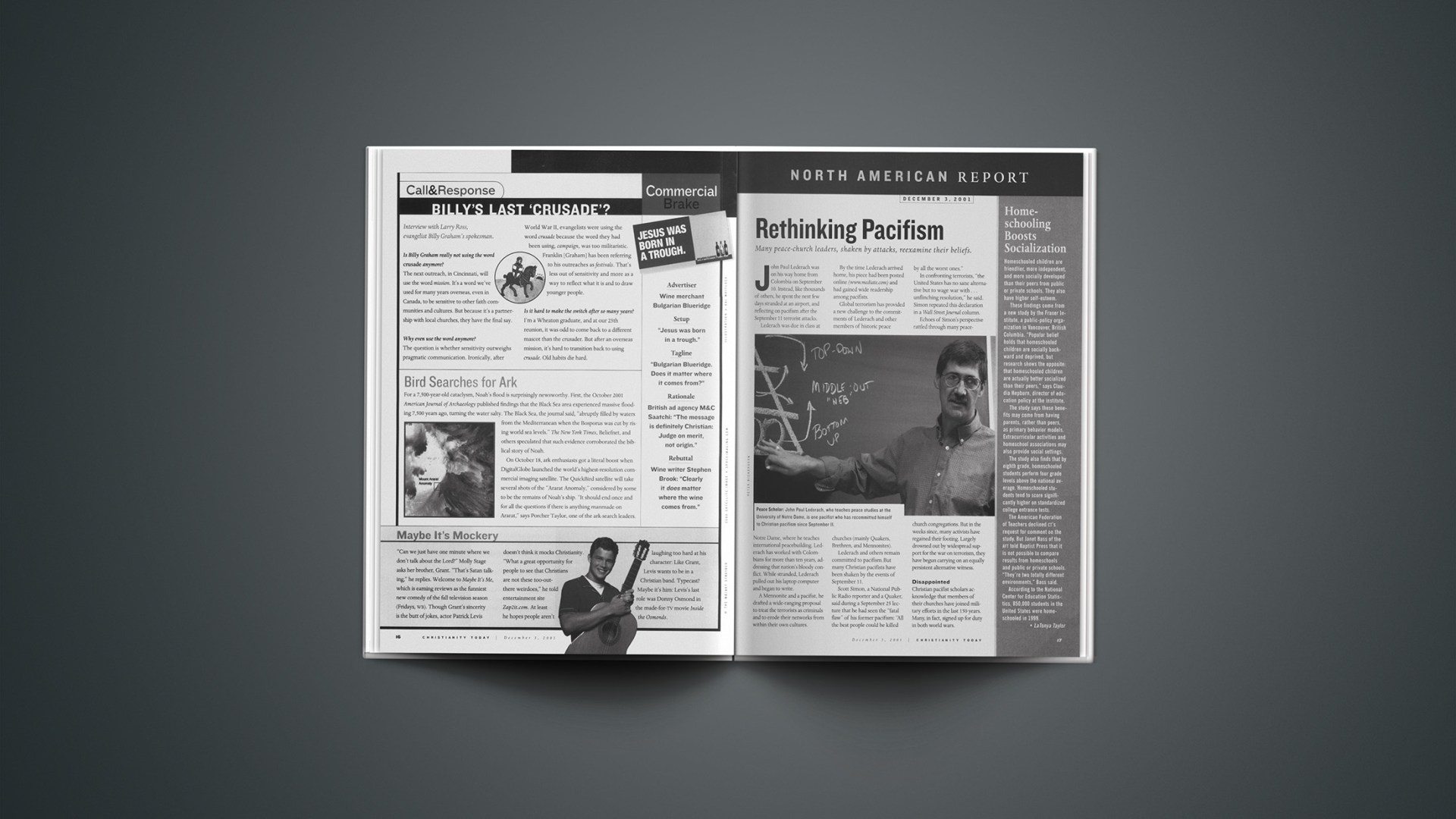For a 7,500-year-old cataclysm, Noah’s flood is surprisingly newsworthy. First, the October 2001 American Journal of Archaeology published findings that the Black Sea area experienced massive flooding 7,500 years ago, turning the water salty. The Black Sea, the journal said, “abruptly filled by waters from the Mediterranean when the Bosporus was cut by rising world sea levels.” The New York Times, Beliefnet, and others speculated that such evidence corroborated the biblical story of Noah.
On October 18, ark enthusiasts got a literal boost when DigitalGlobe launched the world’s highest-resolution commercial imaging satellite. The QuickBird satellite will take several shots of the “Ararat Anomaly,” considered by some to be the remains of Noah’s ship. “It should end once and for all the questions if there is anything manmade on Ararat,” says Porcher Taylor, one of the ark-search leaders.
Copyright © 2001 Christianity Today. Click for reprint information.
Related Elsewhere
Related articles include:
QuickBird imaging satellite ready for duty — Space.com (November 2, 2001)
Evidence found of Noah’s ark flood victims — The Guardian, London (September 13, 2001)
Satellites search for Noah’s Ark — MSNBC (August 23, 2001)
Satellites Search for Ancient Artifact — Space.com (August 23, 2001)
Is Noah’s ark under the Black Sea? — AFP (August 12, 2001)
Space.com has satellite pictures of Mt. Ararat to search and zoom in on.
The Guardian, London, provides a page of links on Noah’s ark.
See Noah’s Ark Search for frequently asked questions, a list of resources, and extensive links.
The 1999 book, Noah’s Flood: The New Scientific Discoveries About the Event That Changed Historyis available at Christianbook.com.
DigitalGlobe has an article on the launch of the Quickbird.










